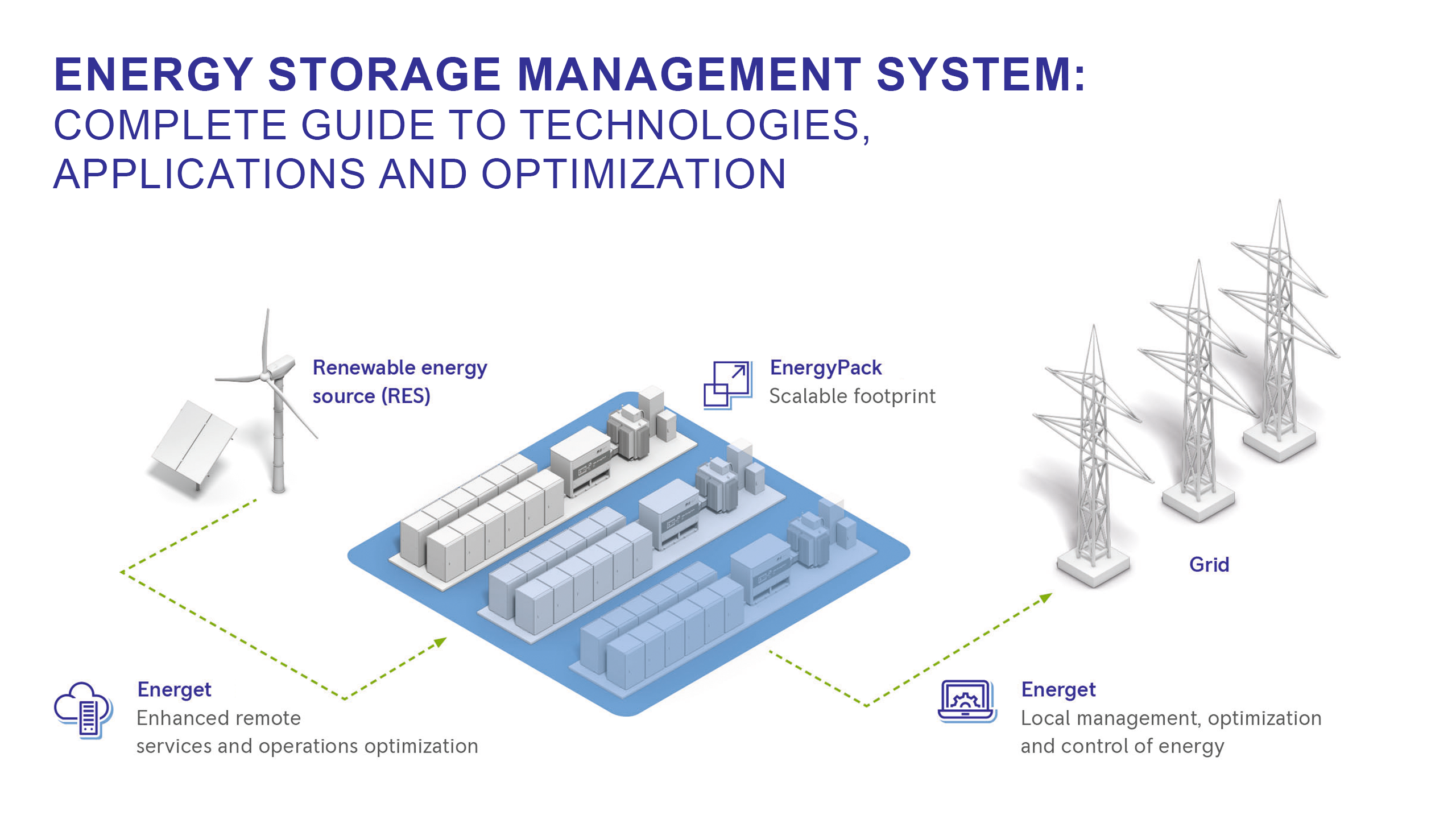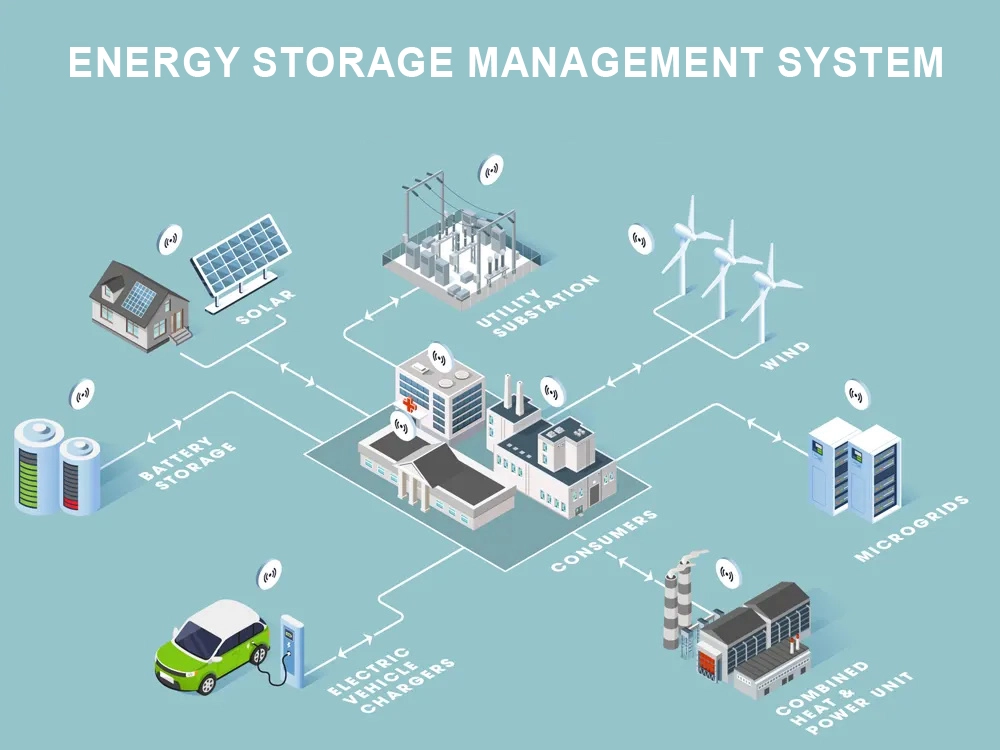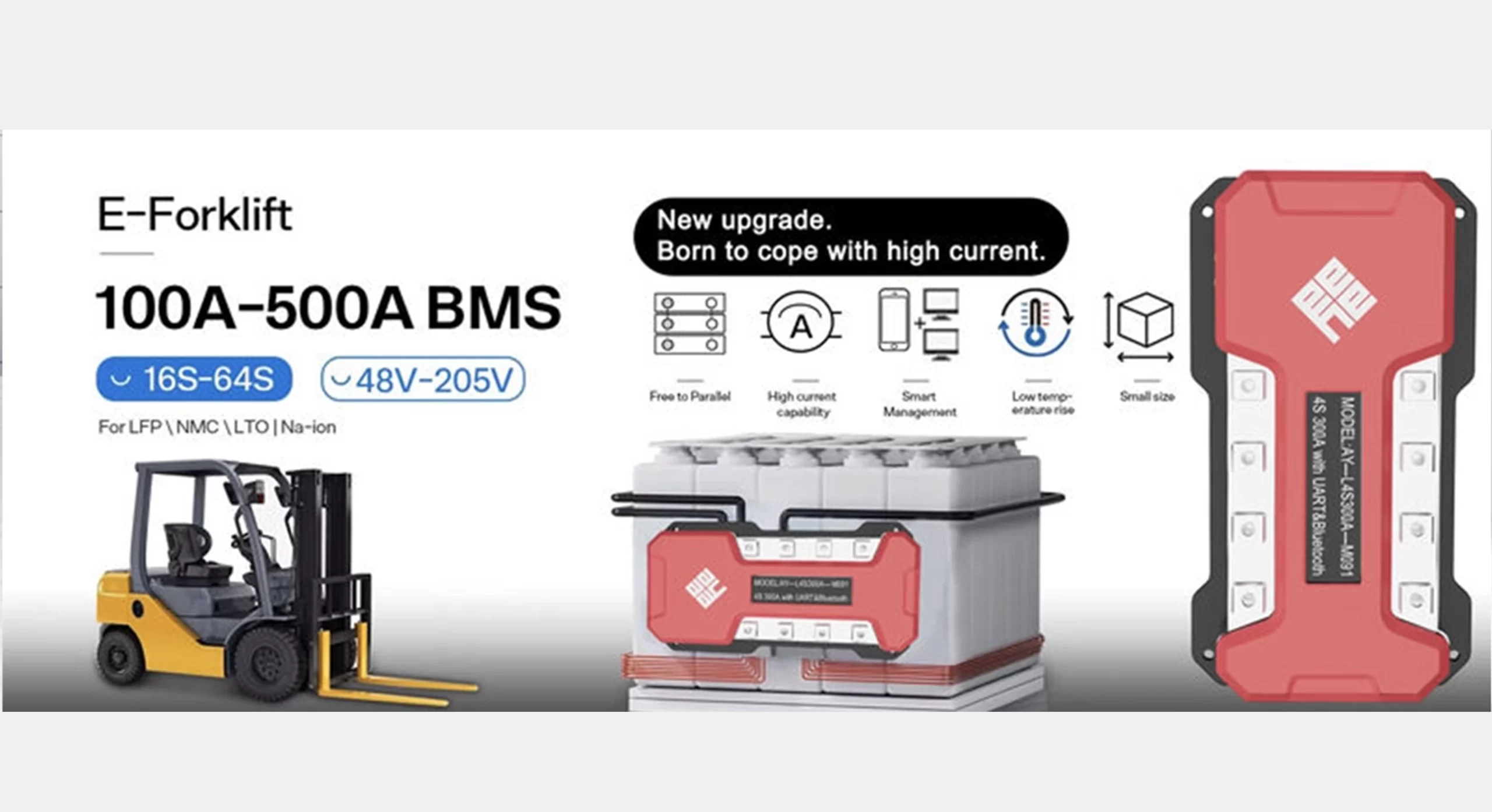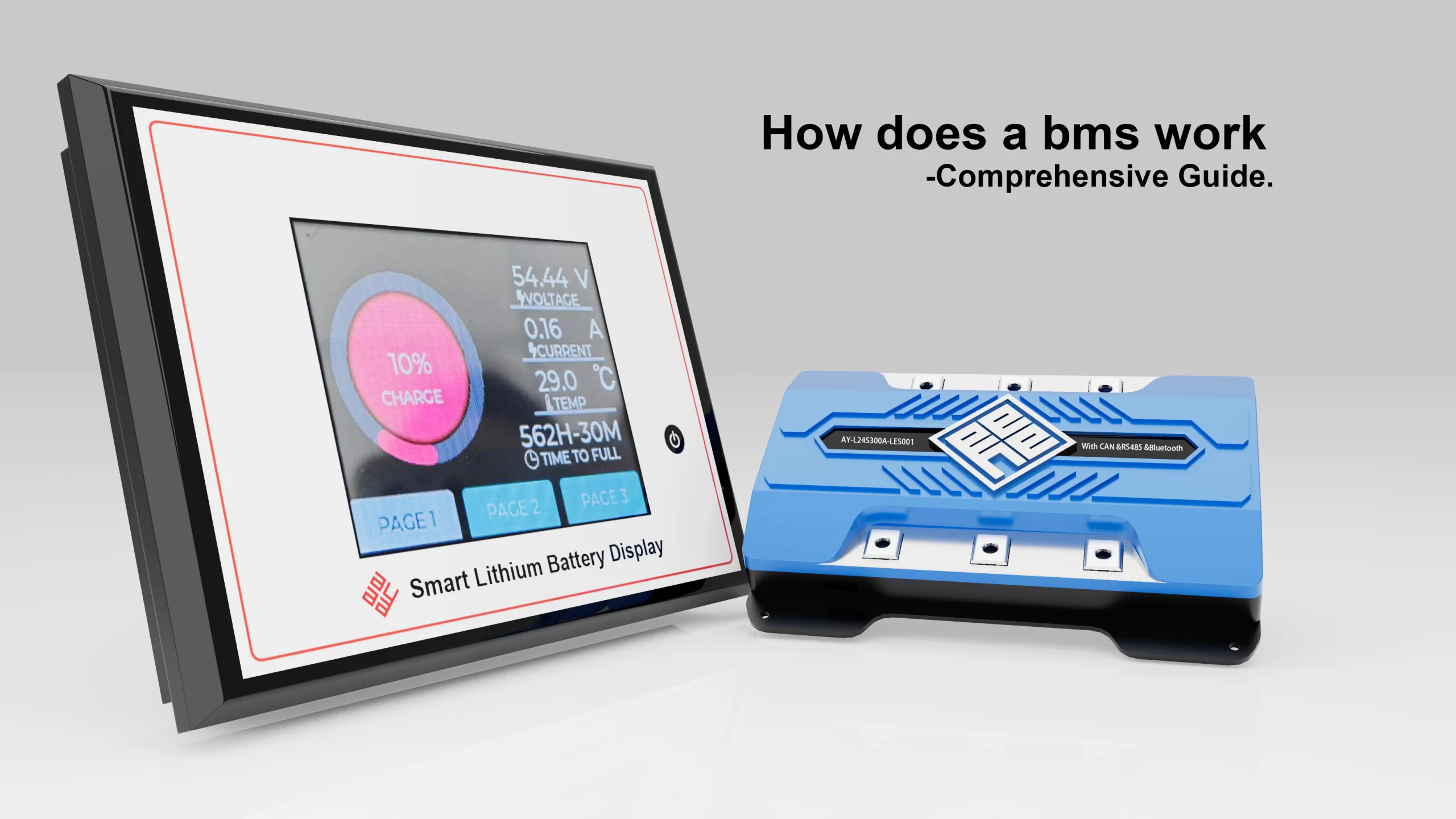Home About Us EVENTS & NEWS Energy Storage Management System: Complete Guide to Technologies, Applications and Optimization
Energy Storage Management System: Complete Guide to Technologies, Applications and Optimization
Energy Storage Management System: Complete Guide to Technologies, Applications and Optimization
What Is an Energy Storage Management System (ESMS)?
An Energy Storage Management System is an intelligent software platform that optimizes the charging/discharging cycles, safety protocols, and performance analytics of battery storage systems.
Acting as the “brain” of energy storage infrastructure, it integrates hardware components with data-driven algorithms to ensure peak efficiency.
Unlike basic controllers, ESMS solutions like Tesla’s Autobidder or Fluence’s AI-driven platforms enable predictive maintenance and grid service monetization.

How Do Energy Storage Systems Work? A Step-by-Step Breakdown
- Energy Capture
-
- Solar panels/wind turbines feed DC electricity to batteries
-
- Grid power converts AC to DC via rectifiers during off-peak hours
-
- Storage Phase
-
- Lithium-ion/NiMH batteries store energy at 90-95% round-trip efficiency
-
- Liquid cooling systems maintain optimal 20-25°C operating temps
-
- Discharge Process
-
- Inverters convert stored DC to AC power
-
- Smart relays prioritize critical loads during outages
-
- Continuous Optimization
-
- IoT sensors track state-of-charge (SOC) and depth-of-discharge (DOD)
-
- Machine learning adjusts cycles based on weather forecasts/price signals
-
What Are the Key Components of an ESMS?
-
- Battery Management System (BMS) – Monitors cell voltage/temperature with ±0.5% accuracy
- Power Conversion System (PCS) – Achieves 97-99% conversion efficiency using SiC semiconductors
-
- Energy Management Software – Uses mixed-integer linear programming for cost optimization
-
- Thermal Regulation – Phase-change materials absorb excess heat during rapid charging
-
- Cybersecurity Layer – Implements NIST SP 800-82 standards against grid cyberattacks
Why Are ESMS Critical for Renewable Energy Integration?
ESMS resolves the duck curve challenge in solar-rich grids by:
-
- Time-shifting excess daytime solar to evening peaks
-
- Providing 50-100ms frequency response during cloud cover events
-
- Enabling virtual power plants through aggregated distributed storage

What Are the Real-World Applications of Modern Energy Storage Systems?
-
- Grid Stability – Deployments like Australia’s Hornsdale Power Reserve (150MW/194MWh) provide 450ms frequency control to prevent blackouts.
-
- Microgrids – Alaska’s Cordova ICEStor project uses cryogenic storage to achieve 98% uptime in extreme climates.
-
- EV Charging Hubs – Tesla’s Megapack buffers 1.2MWh at Supercharger sites, cutting grid upgrade costs by 60%.
-
- Industrial Load Shifting – Cement plants use ESS to reduce $250k/month demand charges during 4-9pm peak windows.
How to Design an Efficient Energy Storage System: 5 Critical Factors
- Battery Chemistry Selection
-
- Lithium-iron-phosphate (LFP) for 8,000+ cycles vs. NMC for high energy density
-
- Redox flow batteries for >20-year lifespan in stationary apps
-
- Thermal Runaway Prevention
-
- Ceramic-coated separators delay ignition by 15 minutes (UL 9540A test data)
-
- Modular Architecture
-
- Fluence’s 20ft Cube allows 500kWh increments with <3% balance-of-system losses
-
- Efficiency Validation
-
- Third-party testing per IEC 62933-2 for round-trip efficiency claims
-
- Cybersecurity
-
- Hardware-enforced TLS 1.3 encryption for SCADA communications
-
What Operational Challenges Do Energy Storage Systems Face? (And How to Solve Them)
| Challenge | Data-Backed Solution |
|---|---|
| Cell balancing errors | AI-driven BMS detects ±2mV voltage drift across 10k+ cells |
| Calendar aging | Nickel-rich cathodes reduce capacity fade to 1.5%/year (NREL 2023 study) |
| Fire risks | Argon suppression systems extinguish Li-ion fires in <60 seconds |
| Regulatory hurdles | UL 1973-certified systems streamline AHJ approvals by 8 weeks |
Can You Optimize ESS for Maximum ROI? 3 Proven Strategies
-
- Price Arbitrage – Charge during $25/MWh overnight lows, discharge at $180/MWh evening peaks (CAISO 2024 data)
-
- Ancillary Services – Earn $55/kW-year for 10-minute fast frequency response (UK Dynamic Containment)
-
- Demand Charge Management – Slash commercial bills by 30% using predictive load algorithms (Schneider EcoStruxure case study)
ROI Calculation Example:
-
- Initial cost: $400/kWh
-
- Annual savings: $120/kWh
-
- Payback period: 3.3 years (pre-ITC)
How Will Future Energy Storage Management Systems Evolve?
Emerging innovations set to transform ESS operations by 2030:
-
- Solid-State Batteries – QuantumScape’s prototypes show 80% capacity retention after 1,000 cycles at 4C rates
-
- Self-Healing Grids – Auto-reconfiguration algorithms restore power in <100ms during feeder faults
-
- AI Co-Pilots – Google’s DeepMind reduced Googleplex cooling costs by 40% via neural network-based ESS control
-
- Blockchain Trading – Brooklyn Microgrid’s transactive energy platform enables peer-to-peer solar storage sales
Conclusion
Energy Storage Management Systems (ESMS) have emerged as the critical intelligence layer bridging renewable energy generation with reliable power delivery.
As demonstrated throughout this guide, modern ESMS solutions combine advanced battery technologies with AI-driven software to address everything from millisecond-level grid stabilization to multi-year ROI optimization.
The integration of components like precision BMS monitoring, high-efficiency PCS conversion, and predictive thermal management enables these systems to solve pressing energy challenges – whether preventing blackouts in Australia, reducing industrial demand charges by 30%, or enabling peer-to-peer energy trading in Brooklyn.
Looking ahead, innovations in solid-state batteries, self-healing grids, and blockchain integration promise to further elevate ESMS capabilities.
What makes today’s energy storage management systems truly revolutionary is their.
SHARE
News Recommend
Energy Storage Management System: Top Solutions & Trends 2025 | AYAA
Explore Shenzhen Ayaa Technology’s energy storage management system solutions. Discover AI-driven optimisation, 2025 trends like solid-state batteries, and UL/IEC standards. Learn applications and ROI tips for efficient, sustainable grid and renewable energy storage.
Energy Storage Management System: Comprehensive Guide to Technologies, Applications, and Optimisation
An energy storage management system (ESMS) is the intelligent core of battery energy storage systems (BESS), orchestrating charging, discharging, safety, and performance analytics to ensure peak efficiency. As renewable energy adoption accelerates, energy storage management systems are vital for grid stability, cost savings, and sustainability. Shenzhen Ayaa Technology Co., Ltd., a global leader in BESS solutions, delivers advanced energy storage management system platforms tailored for diverse applications. This guide explores ESMS technologies, real-world applications, optimisation strategies, and 2025 trends to help you design and deploy high-performance systems.
What Is an Energy Storage Management System?
An energy storage management system is a sophisticated software platform that integrates battery hardware with AI-driven algorithms to optimise energy storage operations. Unlike basic controllers, an energy storage management system enables predictive maintenance, grid service monetisation, and real-time monitoring with ±0.5% accuracy. Shenzhen Ayaa Technology’s energy storage management system, for instance, supports industrial and grid-scale projects with robust BMS and cybersecurity features, ensuring reliability and efficiency.
How Do Energy Storage Management Systems Work?
An energy storage management system manages energy storage through four key phases:
1. Energy Capture: Solar panels or wind turbines supply DC electricity, while grid power is converted from AC to DC during off-peak hours via rectifiers.
2. Storage Phase: Lithium-ion or Nimh batteries store energy at 90-95% round-trip efficiency, with liquid cooling maintaining optimal 20-25°C temperatures.
3. Discharge Process: Inverters convert stored DC to AC, and smart relays prioritise critical loads during outages.
4. Continuous Optimisation: IoT sensors track state-of-charge (SOC) and depth-of-discharge (DOD), while machine learning adjusts cycles based on weather and market signals.
Ayaa’s energy storage management system enhances these processes, reducing energy losses by up to 10% through AI-driven analytics.
Key Components of an Energy Storage Management System
A high-performance energy storage management system includes:
- Battery Management System (BMS): Monitors cell voltage and temperature with ±0.5% accuracy, preventing overcharge or thermal runaway.
- Power Conversion System (PCS): Achieves 97-99% efficiency using silicon carbide (Sic) semiconductors.
- Energy Management Software: Employs mixed-integer linear programming for cost optimisation.
- Thermal Regulation: Phase-change materials absorb heat during rapid charging.
- Cybersecurity Layer: Implements NIST SP 800-82 standards to protect against grid cyberattacks, such as DDoS attacks on SCADA systems.
Shenzhen Ayaa Technology’s energy storage management system integrates these components seamlessly, ensuring security and scalability.
Why Are Energy Storage Management Systems Essential for Renewable Energy?
An energy storage management system addresses renewable energy challenges, such as the duck curve, by:
- Time-Shifting: Moving excess daytime solar to evening peaks.
- Frequency Response: Providing 50- 100ms stabilisation during cloud cover events.
- Virtual Power Plants: Aggregating distributed storage for grid support.
Ayaa’s energy storage management system enables virtual power plants, helping battery energy storage system companies monetise grid services with 98% uptime.
Real-World Applications of Energy Storage Management Systems
1. Grid Stability: Australia’s Hornsdale Power Reserve (150mw/194MWh) leverages an energy storage management system for 450ms frequency control, preventing blackouts.
2. Microgrids: Alaska’s Cordova ICEStor project uses cryogenic storage and an energy storage management system to achieve 98% uptime in extreme climates.
3. EV Charging Hubs: Tesla’s Megapack, managed by an ESMS, buffers 1.2 MWh, reducing grid upgrade costs by 60%.
4. Industrial Load Shifting: Cement plants cut $250k/month demand charges using ESMS for peak shaving.
Ayaa’s energy storage management system powers these applications with scalable, AI-driven solutions.
How to Design an Efficient Energy Storage Management System
Designing an effective energy storage management system requires:
1. Battery Chemistry: Select lithium-iron-phosphate (LFP) for 8,000+ cycles or redox flow batteries for 20-year lifespans.
2. Thermal Runaway Prevention: Use ceramic-coated separators (UL 9540a compliant) to delay ignition by 15 minutes.
3. Modular Architecture: Adopt systems like Fluence’s 20ft Cube for 500 kWh increments with <3% losses.
4. Efficiency Validation: Ensure IEC 62933-2 third-party testing for efficiency claims.
5. Cybersecurity: Implement TLS 1.3 encryption for secure SCADA communications.
Ayaa’s energy storage management system designs incorporate these factors, optimising performance and safety.
Operational Challenges and Solutions for Energy Storage Management Systems
|
Challenge |
Data-Backed Solution |
| Cell Balancing Errors | AI-driven BMS detects ±2mV voltage drift across 10k+ cells |
| Calendar Aging | Nickel-rich cathodes reduce capacity fade to 1.5%/year (NREL 2023 study) |
| Fire Risks | Argon suppression systems extinguish Li-ion fires in <60 seconds |
| Regulatory Hurdles |
UL 1973-certified systems streamline approvals by 8 weeks |
| Cybersecurity Threats | NIST SP 800-82-compliant firewalls block DDoS attacks on SCADA systems |
Ayaa’s energy storage management system addresses these challenges, ensuring compliance and reliability.
Optimising Energy Storage Management Systems for Maximum ROI
Maximise ROI with:
1. Price Arbitrage: Charge at $25/MWh overnight lows and discharge at $180/MWh peaks (CAISO 2024 data).
2. Ancillary Services: Earn $55/kw-year for 10-minute frequency response (UK Dynamic Containment).
3. Demand Charge Management: Reduce commercial bills by 30% with predictive algorithms (Schneider EcoStruxure case study).
ROI Example:
- Initial Cost: $400/kWh
- Annual Savings: $120/kWh
- Payback Period: 3.3 years (pre-ITC)
Ayaa’s energy storage management system optimises these strategies for profitability.
2025 Trends in Energy Storage Management Systems
The energy storage management system landscape is evolving:
- AI-Driven Optimisation: Ayaa’s platforms predict maintenance, cutting downtime by 20%.
- Solid-State Batteries: Retain 80% capacity after 1,000 cycles, boosting ESMS efficiency.
- Safety Standards: UL Solutions’ April 2025 BESS testing emphasises thermal runaway prevention.
- Market Growth: Global BESS capacity surged fivefold from 2021-2024, driving ESMS demand.
Ayaa’s energy storage management system aligns with these trends, ensuring future-readiness.
Energy Storage Management Systems by Region
Regional needs shape energy storage management system design:
- United States: NERC and UL 1973 compliance ensure grid reliability.
- European Union: CE marking and renewable targets prioritise eco-friendly ESMS.
- Asia-Pacific: Australia’s growing BESS market demands scalable systems.
Ayaa’s energy storage management system meets these diverse standards.
Success Stories with Energy Storage Management Systems
Case Study: California Microgrid
A Sacramento microgrid operator adopted Shenzhen Ayaa Technology’s energy storage management system, reducing demand charges by 25% and achieving 98% uptime. The AI-driven BMS saved $150k annually through load shifting.
“Ayaa’s energy storage management system transformed our grid resilience!” – Energy Manager, Sacramento.
“Shenzhen Ayaa Technology’s ESMS delivered unmatched efficiency for our solar project.” – Engineer, Melbourne.
Why Shenzhen Ayaa Technology Excels in Energy Storage Management Systems
With over 20 years of expertise, Shenzhen Ayaa Technology is a leader in energy storage management systems. Their strengths include:
- AI Integration: Predictive analytics for 95% efficiency.
- Certifications: UL, IEC, ISO14001 compliance.
- Sustainability: Eco-friendly, recyclable designs.
- Global Reach: Serving the U.S., EU, and Asia-Pacific.
Ayaa empowers businesses with innovative energy storage management systems.
An energy storage management system is essential for bridging renewable energy with reliable power delivery. From grid stability to microgrids, platforms like Shenzhen Ayaa Technology’s energy storage management system drive efficiency, safety, and ROI. With 2025 trends like AI optimisation and solid-state batteries, ESMS are poised to revolutionise energy storage.
FAQs
Q: What is an energy storage management system?
A: An energy storage management system optimises BESS with AI-driven software, as offered by Shenzhen Ayaa Technology.
Q: How does an ESMS improve ROI?
A: An energy storage management system enables price arbitrage, saving 30% on demand charges.
Q: What certifications should ESMS providers have?
A: UL 1973 and IEC ensure reliability, met by Ayaa’s energy storage management system.
Q: How does ESMS support microgrids?
A: An energy storage management system ensures 98% uptime, as seen in Ayaa’s deployments.
Q: What are the 2025 ESMS trends? A:
AI and solid-state batteries enhance energy storage management systems.
Q: How does cybersecurity protect ESMS?
A: TLS 1.3 and NIST standards secure Ayaa’s energy storage management system.















